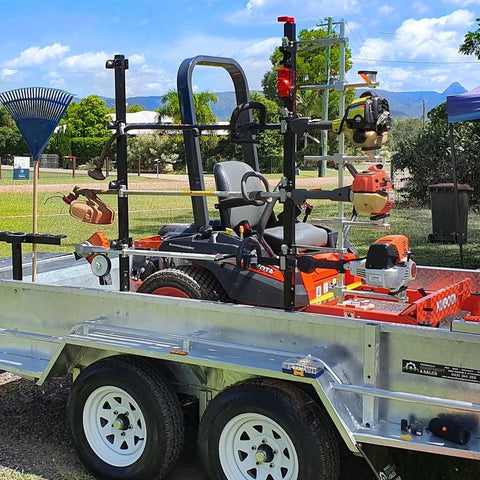Properly storing and transporting your whipper snipper is as important as using it correctly. Adequate care during these times not only extends the life of your tool but also ensures it's in perfect working order for your next gardening project.
Whether you're tucking your whipper snipper away until the next season or moving it to a new location, the following steps will help you maintain its condition and functionality.
Proper Storage Practices

- Thorough Cleaning: Begin with a meticulous cleaning regimen. Use a soft brush and cloth to remove all traces of soil, vegetation, and debris. Pay extra attention to the air intake slots and the cooling fins on the engine, which can harbor dirt that affects performance.
- Fuel Management (Gas-Powered Models): If your whipper snipper runs on gasoline, the end-of-season storage ritual should include addressing the fuel. For storage periods over 30 days, drain the fuel tank to prevent varnish and gum from forming in the fuel system. If draining isn't an option, fill the tank with fresh fuel mixed with a fuel stabilizer and run the engine for a few minutes to distribute the stabilized fuel throughout the system.
- Spark Plug Disconnection: Always remove the spark plug wire to prevent any chance of accidental ignition. This is especially important in environments where flammable vapors may be present.
- Elevated and Secure Storage: Designate a storage spot that is elevated, dry, and out of the way of potential hazards. Wall mounts are ideal for keeping the whipper snipper off the floor and avoiding any accidental water damage or being knocked over.
- Covering: Use a custom-fit cover or a universal tarp that breathes to discourage rusting. Make sure the cover is snug but not too tight to promote some air circulation, reducing condensation.
Preparing for Long-Term Storage
- Fuel System Preservation: For gas-powered models, after draining or stabilizing the fuel, conduct a final run until the engine stops from fuel depletion. This step ensures that the carburetor is emptied, preventing buildup of deposits.
- Lubricant Replacement and Oil Change: Replace the existing oil with fresh lubricant to prevent the old oil from settling and forming sludge. Check if your whipper snipper has a grease fitting on the gearbox and refresh the grease as needed.
- Battery Maintenance (Electric Models): For electric whipper snippers, remove the battery and store it in a temperate environment, avoiding extreme cold or heat, which can diminish battery capacity and lifespan.
- Component Inspection and Lubrication: Examine all moving parts for wear and tear. Apply a light film of oil on metal surfaces to protect them from rust. Ensure that the cutting head and other moving parts are lubricated according to the manufacturer's specifications.
Safety Considerations During Transportation

- Allowing for Cool-Down: After use, let the whipper snipper cool down before attempting to transport it. This is critical to prevent burns or heat damage to your vehicle's interior.
- Firm Securing: Use tie-down straps or a dedicated space in your vehicle to secure the whipper snipper. It should be positioned to prevent fuel from spilling and to avoid movement that could cause damage to the tool or your vehicle.
- Fuel Considerations: When transporting, especially for longer distances, keep the fuel tank as empty as possible and the cap tightly closed to mitigate leakage risks.
- Protective Measures for the Cutting Head: Employ a protective blade cover over the cutting head. This not only preserves the sharpness of the blade but also prevents it from causing unintended scratches or cuts during transport.
Adopting these detailed storage and transportation practices will not only extend the life of your whipper snipper but also keep it safe and effective for when duty calls.
As you've journeyed through the detailed intricacies of proper storage practices, fuel management, and safe transport guidelines, you've equipped yourself with the knowledge to extend the functional lifespan of your whipper snipper significantly. The dedication to these practices ensures that your tool will be preserved in its best condition, ready to spring into action with reliability and precision.
Let this guide be the cornerstone of your whipper snipper care routine, and you'll enjoy a garden that is not only well-tended but also a testament to the enduring quality of your tools.
Elevate your garden maintenance by exploring our full guide, and see how our top-tier products can fit into your gardening narrative.

